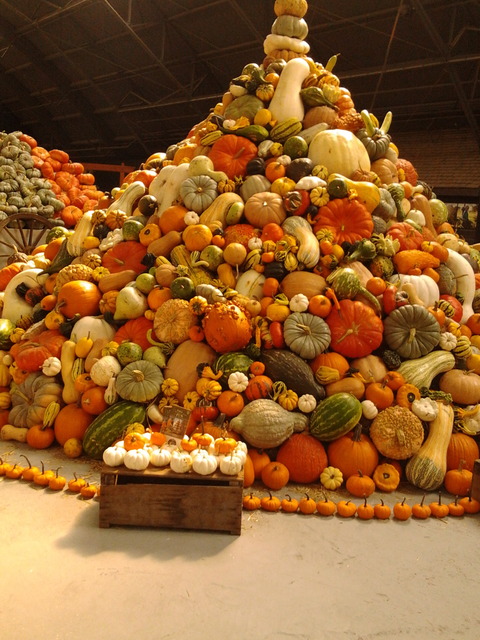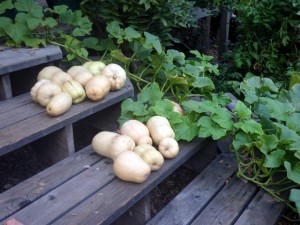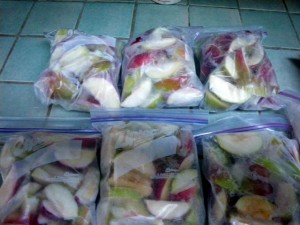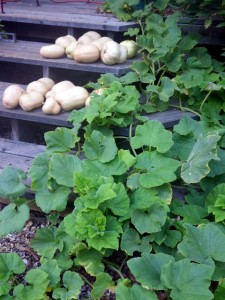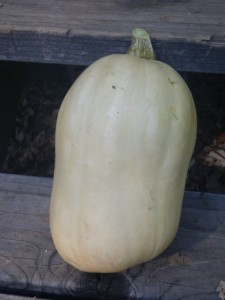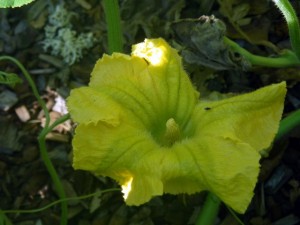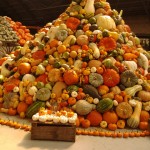
Well, I have to confess, I didn’t grow all these squash. But it is quite an impressive pile. My own harvest was much more modest.
I am not interested in spending time in a hot kitchen boiling and canning massive amounts of food. I definitely lean towards the quick and easy solutions. For preserving some of the Fall harvest, freezing the food is a great solution. Freshly picked and quickly frozen food keeps most of its nutritive qualities.
My biggest harvests were butternut squash and apples, which both lend themselves to freezing which is so easy, and very safe for preserving.
Here’s how I do it:
Butternut Squash:
- Wash the outside of the squash
- Bake whole or cut in half, in 350 deg oven until you can put a knife easily into the squash- approximately 1 hour for large and 1/2 hour for small ones
- Let the squash cool and peel off outer skin
- Place into 1 quart Ziploc freezer bags
- Label with name of food and date of freezing. (You probably want to use these in the next 6 – 8 months, not years)
- Voila! Pull out and use as needed, for soup, baking or just heat up.
Apples:
- Wash and cut into slices, removing the core as you cut
- Drizzle lemon juice over slices so that they won’t get brown
- Fill up Ziploc Freezer bags full, and try to get most of the air out when you close them
- Take out bags as needed and use them in smoothies, apple pies, applesauce or just eat them frozen
- Don’t forget to label and date them.
This really couldn’t be simpler. The food is easy to store and keeps its nutritive value. Check out these recipes in my blog for the best applesauce and apple crisp.

